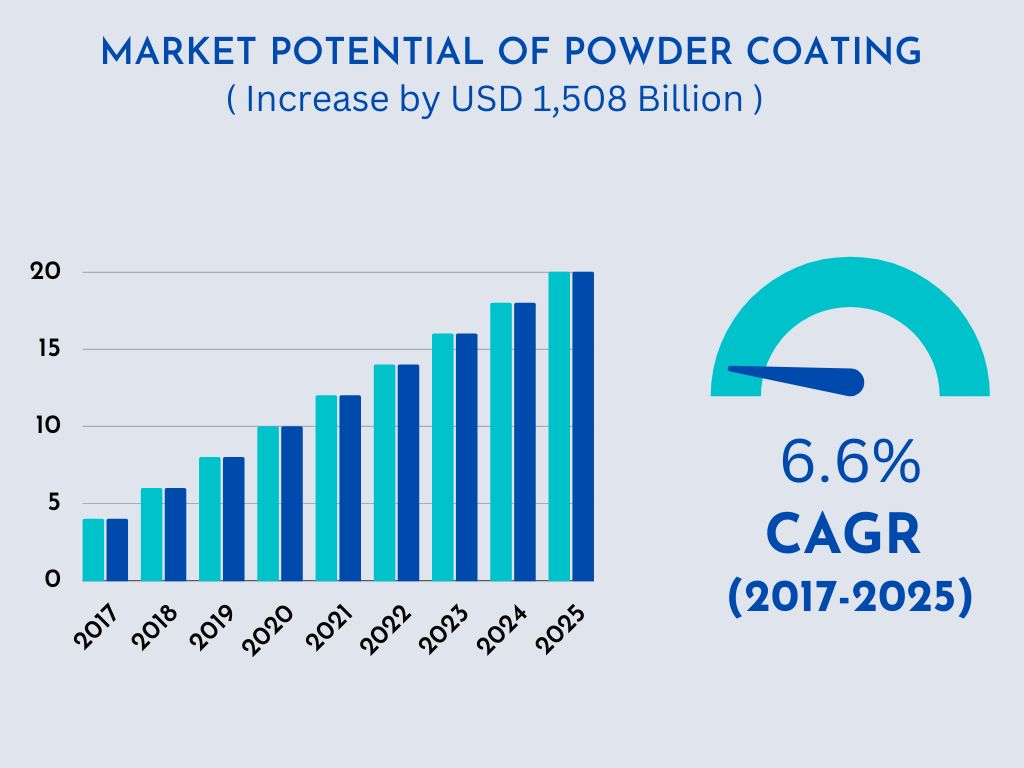Introduction
Project report for Powder coating is as follows.
Powder coating is a dry finishing technique that was first used in North America in the 1960s and has had tremendous growth ever since. The powder, which makes up over 15% of the market for industrial finishing, is used on a range of products. More and more companies specify powder coatings for a high-quality, long-lasting finish, allowing for increased production, improved efficiency, and simpler environmental compliance.
Powder coatings are used as functional (protective) and ornamental finishes, and they come in an almost infinite variety of colors and textures. Additionally, thanks to technological improvements, they now offer great performance characteristics.
Polymer resin systems are mixed with flow enhancers, levelers, pigments, and other additives to create powder coatings. These ingredients are put together in a melting pan, let cool, and then pounded into a fine powder that resembles baking flour. On a metal substrate, the powder coating is often applied using a technique called electrostatic spray deposition (ESD). In this method of application, a spray cannon electrostatically charges the powder particles, luring them to the ground side. After the powder coating has been applied, the components are placed in a curing oven, where the heat causes the coating to chemically react, producing long molecular chains and a high cross-link density.

The molecular chains in question are extremely hard to break. The most typical way to apply powders is using this kind of application. Additionally, non-metallic substrates like plastic and medium-density fiberboard can receive powder coatings (MDF). Occasionally, a fluidized bed application includes the application of a powder coating. The coating melts when preheated components are dipped in a hopper of fluidizing powder, and it then flows out onto the part. Depending on the part’s bulk, temperature, and the kind of powder used, post-cure may be necessary. Powder coatings are simple to use, cost-effective, ecologically friendly, and durable regardless of the application method.
Market Potential For Powder Coating ‘s
The India powder coatings market is anticipated to increase from $896.7 million in 2017 to $1,508 million by 2025, with a CAGR of 6.6% over that time.
The market for powder coatings in India is being propelled by accelerated urbanization and increased industry. Growth in demand from various applications, including automotive, general industrial, furniture, and others, is another factor driving the market. Due to increased foreign direct investments (FDI) brought on by the Make in India program, the size of the powder coatings industry in India is growing at a rapid rate. This market, which mostly consists of epoxy- and polyester-based materials, is particularly well-liked in India due to its resistance to abrasion, slippage, spills, heat, and chemicals. Epoxy powder coatings adhere to a flawless, antistatic surface that is also simple to maintain. The growth of the powder coating market in India is anticipated to be hampered by increased alternative competition. Due to increased infrastructure expenditure, India’s market share for powder coatings in the Asia-Pacific region is increasing significantly.

The resin type, coating technique, application, and geography are the market segments used to divide the Indian powder coatings market. The market is segmented into thermoset and thermoplastic segments based on the kind of resin used. The thermoset is further divided into an acrylic, polyester, epoxy, and epoxy polyester hybrid. Polyvinyl chloride (PVC), nylon, polyolefin, and polyvinylidene fluoride are further subdivided into thermoplastic (PVDF). It is divided into two categories, electrostatic spray, and fluidized bed, depending on the coating technique. Appliances, automotive, architectural, furniture, agriculture, construction, earthmoving equipment (ACE), general industrial, and other applications make up the majority of the market. The market is examined throughout North India, South India, East India, and West India based on region.
Project Sample Report
Need Help?
Create 100% Bankable Project Report

